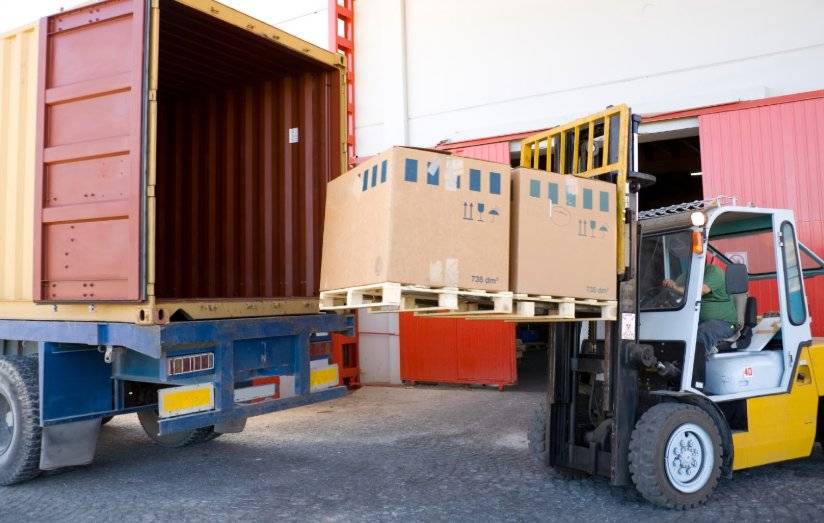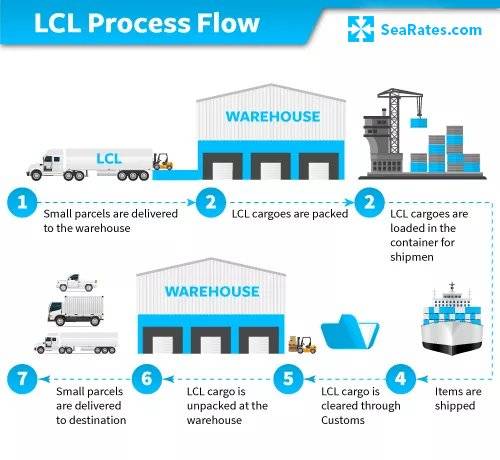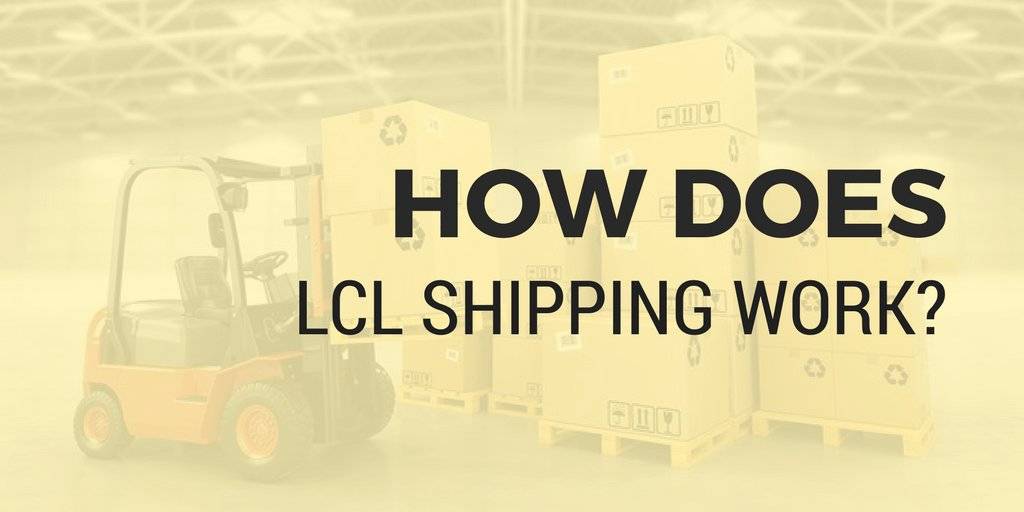In this post we’ll talk about the answers to the Clients' most popular and frequently asked questions on sending groupage cargoes from Europe, the USA, China and other Asian countries.
What is a consolidated container? What type of containers are used to transport groupage cargoes?
A consolidated container is a sea line container that the forwarder uses to transport groupage cargo from different shippers to different consignees. This can be a 20-foot container, or 40-foot containers (DV - Dry Van or HC - High Cube). The most commonly used are 40`HC containers, which are completely filled with general cargo, which allows the freight forwarder to offer Customers a fairly low cost of shipping goods from China and other countries.

Which shipping line accepts such cargo?
Sea transportation of a consolidated container can be carried out by any of the shipping lines. Normally such service is not tied to any particular sea line, and the forwarder, in coordination with his agent at the port of departure, chooses the line that has the shortest possible transit time, the absence of additional transshipment ports, and the highest quality service. Today, most often are used MAERSK, COSCO, CMA, MSC, YML, etc. lines, offering the fastest service for the delivery of groupage cargo from China and other Asian countries.
Does any port fits for the consolidated container disbanded?
At the moment, the consolidated container is disbanded at a customs warehouse in the main ports with container terminals as well as CFSs. By and large, for the LCL shipment there is no difference in which port the disbandment will take place, since It is your freight forwarder that conducts a full cycle of disbanding a shipping a container, land delivery from port/CFS, and the cost of door delivery for the consignee located in the same city as a POD will be the same as during the disbandment in such port. The choice of the place for disbanding the console is the exclusive prerogative of the operator providing the service and they choose the place that is most secure and optimal as a result for the service to customers who should not care about anything at all.
If you are still in a search for a reliable freight forwarder to arrange your LCL shipment - you can contact [email protected] 24/7 to advise the best option.
Is the LCL service provided in conjunction with full customs clearance?
Unless otherwise specified, the transportation of groupage cargoes is conducted without bundling with customs or brokerage services. On demand of the customer they will be given the rate for customs clearance "per cube" or "per kilogram", or a turnkey service will be provided. A reliable customs broker who works professionally in the clearance of LCL cargoes is a rare fact nowadays.
For subject matters you may contact [email protected] or [email protected] to get things done.

What routes of delivery of groupage are available?
At the moment in the world there is a fairly wide geography of routes for the delivery of small cargoes. For LCL cargo from Asia, direct services are offered from Shanghai, Ningbo, Hong Kong and Singapore.
LCL cargoes are also delivered to Europe from India, Indonesia, Thailand and America through the hub in Singapore. Goods from such ports of China as Guangzhou, the port of Xiamen, Qingdao, the port of Shenzhen, Tianjin, as well as the ports of Vietnam, Taiwan, are delivered through our hub in Hong Kong. As for road transport, there are good combined services from Denmark, Croatia, Norway, Switzerland, Slovakia, Austria, Sweden, Czech Republic, Turkey, Portugal, Spain, Belgium, Holland, Finland, Great Britain, France, Germany, Italy, Greece through the consolidation warehouse in Poland, in the city of Warsaw. As you can see, the geography is quite wide. However it is still far from competition with flexibility of FCL services: there is still no export LCL service from major countries of Europe, Africa, Russia and Latin America firstly according to a very low traffic and respectively - demand.
How fast will the cargo handling take place from the moment of the price quote to the moment the consolidated container is shipped?
And how long will it take to disband the container in the country of destination? From the time of filing the application for transportation to the time of shipment in the console on average no more than 1 week passes. The shipper must deliver the cargo to the warehouse of the agent 4-5 days before the date of shipping the console to the POD so that the agent can process the cargo in the warehouse, load it into a container and issue all the necessary documents. The disbanding of the console in the POD takes place within 2 days (if all documents are available) from the moment the container arrives at the port.

What features are available when delivering goods from the port as part of a collection truck, compared to a separate truck?
The main feature is that the delivery by the assembly truck is much cheaper than by a separate truck, especially if the load is small in size, for example, from 1 to 5 cubic meters. In this case, it is better to use a combined truck for any LCL cargo, even with a volume of 30 cubes and weighing 15 tons. As for the technology of delivery as part of an groupage truck is recommended under customs control, especially the cargoes that follow from the POD to the same city or region. This means that a collection truck will deliver goods to several customs posts in turn, but your cargo can be delivered to the destination customs one of the first (the fastest delivery, comparable to the speed of delivery by a separate truck), or the latter (if the load is large, with the possibility of delivering the goods "to the door" after customs clearance", but it will be a little longer). The sequence of delivery of groupage cargoes by road is determined by the carrier's specialists together with each of the clients so that to satisfy requirements of customers and their consignees.

What should I know in the preparation of PD for processing LCL cargo?
The main feature is that the delivery of LCL cargo outside the port, in contrast to the cargo in the whole container, is performed by road (tilt or all-metal truck), and not in the container. This means that the following data should be entered into the preliminary declaration (PD).
In column 31: paragraph 1, make sure you enter the country of origin, and in paragraph 3, enter 0. If box number is entered in column 31, the port services will not release the cargo from the port. In column 19 should be "0". In column 25 there should be a code 10 or 11 or 12. In column 26 there should be a code 30 or 31.
Do you have any questions that you would like to get a more detailed answer to? Contact any of SeaRates managers at [email protected], and they will definitely give their comments.
Do not forget to use the current LCL shipping tariff calculator.
We have an open group for communication on the topic of transport activities, as well as a Telegram channel for classic and innovative posts - join!

